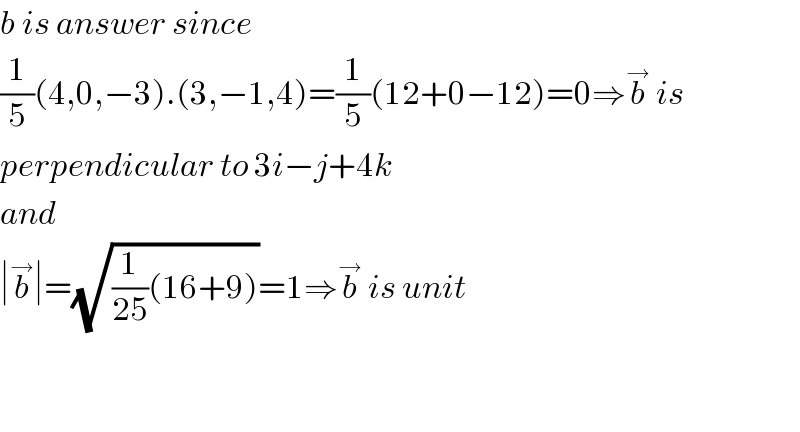
Question Number 69620 by aseer imad last updated on 25/Sep/19

Commented by kaivan.ahmadi last updated on 26/Sep/19

$${b}\:{is}\:{answer}\:{since}\: \\ $$$$\frac{\mathrm{1}}{\mathrm{5}}\left(\mathrm{4},\mathrm{0},−\mathrm{3}\right).\left(\mathrm{3},−\mathrm{1},\mathrm{4}\right)=\frac{\mathrm{1}}{\mathrm{5}}\left(\mathrm{12}+\mathrm{0}−\mathrm{12}\right)=\mathrm{0}\Rightarrow\overset{\rightarrow} {{b}}\:{is} \\ $$$${perpendicular}\:{to}\:\mathrm{3}{i}−{j}+\mathrm{4}{k} \\ $$$${and} \\ $$$$\mid\overset{\rightarrow} {{b}}\mid=\sqrt{\frac{\mathrm{1}}{\mathrm{25}}\left(\mathrm{16}+\mathrm{9}\right)}=\mathrm{1}\Rightarrow\overset{\rightarrow} {{b}}\:{is}\:{unit} \\ $$$$ \\ $$$$ \\ $$
